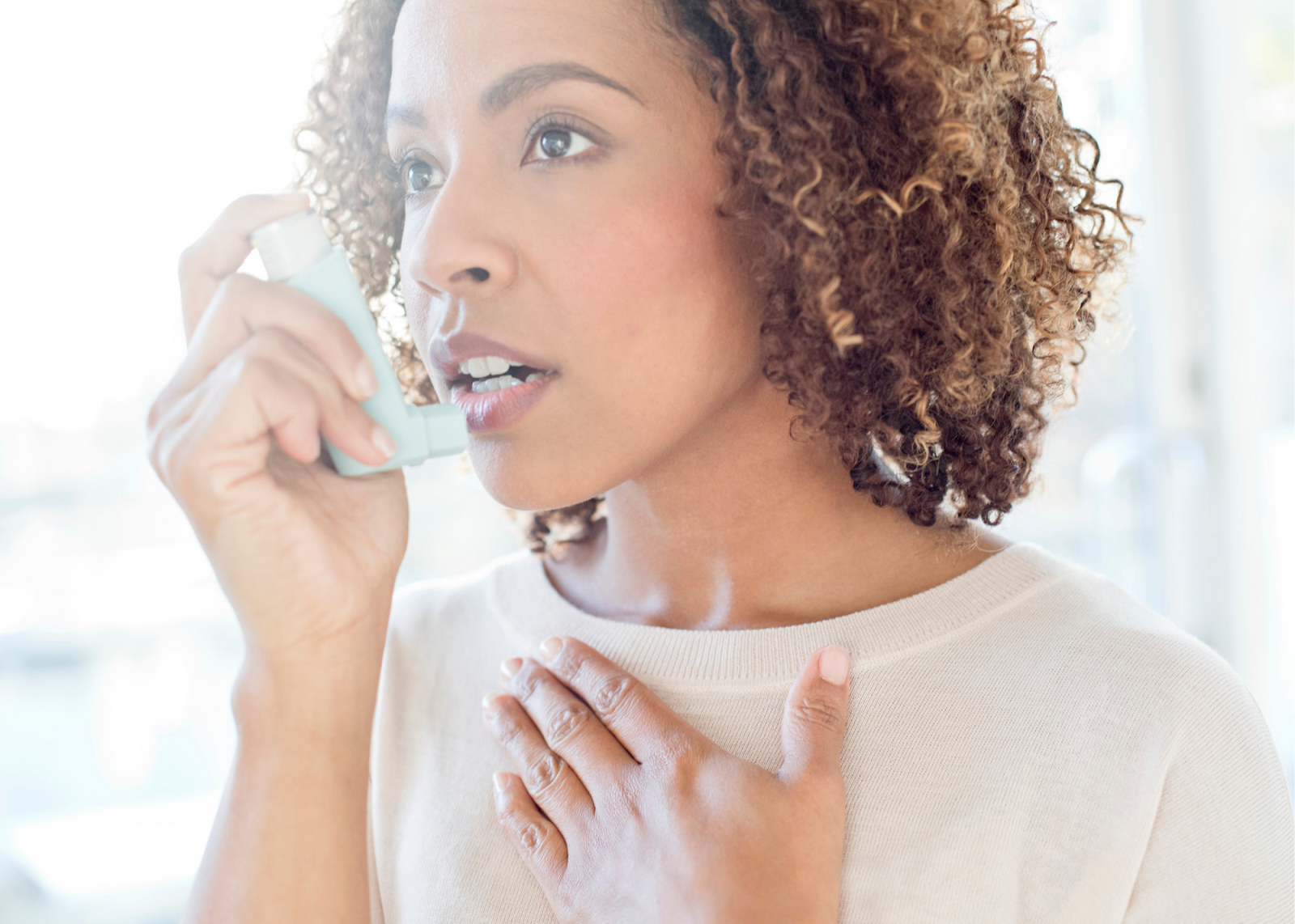Late fall and winter may bring a lot of great things, from holidays to beautiful seasonal colors and mugs of warm drinks–but it can also be prime time for upper respiratory infections.
With vague symptoms like a runny nose, cough, headache, sinus pressure and a low-grade fever, it’s no wonder that many people suffering from a more serious condition, think they simply have an upper respiratory infection.
Yet, some of these symptoms may be early signs of a serious condition called COPD, which is linked to sleep disorders like sleep apnea.
If you’ve been diagnosed with COPD then you may already know that chest pain, coughing, wheezing, difficulty breathing and frequent nighttime urination, all common symptoms of the disease, severely affects your sleep.
Common medications to help treat the illness can also cause daytime sleepiness or insomnia, and changes in breathing patterns that reduce blood oxygen while sleeping may already be causing serious issues. This is especially true if you have both COPD and obstructive sleep apnea (OSA), called overlap syndrome.
Can you have COPD and not know it?
COPD is shorthand for chronic pulmonary disease. According to the American Lung Association, COPD affects an astonishing 15.3 million Americans every year.
COPD exhibits two main ways: emphysema (which damages lungs) and chronic bronchitis (which involves a cough with productive mucus). Many, however, experience a mix of both.
COPD symptoms usually start off very mild and only become noticeable over time, after some damage has already been done to the lungs. But there are some early warning signs of COPD.
What are the early warning signs of COPD?
The reason why upper respiratory infections and even asthma are often confused with COPD becomes more clear when you look at the overlap of common symptoms.
Signs and symptoms of COPD may include:
- Chest constriction
- Unexplained weight loss
- Shortness of breath and/or wheezing
- Chronic productive cough (mucus)
- Edema (swelling), especially in ankles, legs and feet
- Chronic fatigue
That’s why, if you’re getting frequent upper respiratory infections, it’s important to check in with a specialist to see if there could be something more serious going on.
What causes COPD?
One of the most well-known risk factors for COPD is smoking. Tobacco smoke, as well as exposure to fumes, can cause damage to lung and airway function over time.
It is a common misconception that COPD only affects mostly older men that have spent many years smoking or exposed to chemicals in the workplace. However, recent studies have shown that the average age of onset of COPD symptoms is 45 for those without a genetic predisposition to the disease. In addition, higher numbers of women are being diagnosed in their early 30s now than in the previous 20 years.
Experts have also identified a genetic predisposition to COPD through an alpha-1-antitrypsin deficiency, an inherited condition that causes small air sacs to form in the lungs. If you inherited the defective gene that causes COPD and/or you are a heavy smoker, it is very likely that you will start to develop symptoms in your early 20s.
How is COPD diagnosed?
COPD is often misdiagnosed, or diagnosed after lung damage has occurred. The most common tests for COPD include lung function tests; chest x-rays; CT scans of the lungs, and lab or blood analysis tests.
You can test yourself for COPD by taking a breath, holding it for a second, and then blowing as fast as possible. Time how long it takes to release your breath. If it takes longer than 6 seconds, that’s a sign of restricted breathing.
Of course, the next step is finding out how your doctor would like you to get tested for COPD.
Can COPD cause sleep problems?
While sleep apnea does not cause COPD, it can make your condition worse.
If you’ve been diagnosed with COPD, it’s critical that you get assessed for obstructive sleep apnea. Nearly half of people with COPD struggle to breathe during sleep–even if they don’t have full-fledged sleep apnea.
Sleep Apnea and COPD Overlap Syndrome
In fact, COPD and obstructive sleep apnea are linked in that patients often experience something called overlap syndrome, where the two conditions make each other worse.
Suffering from both COPD and sleep apnea puts you at an accelerated increased risk for chronic health conditions like diabetes, pulmonary hypertension and even heart failure. And some evidence suggests that sleep apnea is worse in winter.
Low Oxygen Levels
With overlap syndrome, you have a compromised respiratory system that isn’t getting enough restorative sleep to repair at night.
COPD alone is serious: patients with chronic pulmonary disease experience low blood oxygen levels, with an oxygen dissociation curve that shifts to minimize lung damage.
Because of this, sleep apnea can make a serious condition even more dangerous. In normal lungs, oxygen desaturations of 3 to 4 percent are common, but those with COPD and sleep apnea may experience desaturation as great as 15 to 25 percent. That means that far more air is leaving the lungs, placing oxygen at dangerously low levels. For reference, an oxygen saturation below 90 percent is considered worryingly low.
Is COPD worse at night?
As you can imagine, many patients claim that COPD is worse at night–and there’s evidence that overlap syndrome may be part of the reason.
COPD and sleep apnea make breathing especially difficult at night, and potentially dangerous. But even if you don’t have sleep apnea with COPD, research has found that COPD symptoms are worse at night.
In fact, it’s believed that over 75 percent of patients with COPD experience disrupted sleep. That’s likely because lying down is more likely to obstruct airways than sitting upright. And disrupted sleep, and always feeling tired, explains why some with COPD may feel the need to sleep so much–more than the average 7 to 9 hours of sleep usually recommended.
What is the best sleeping position for COPD?
One way you can address COPD symptoms being worse at night is to be strategic about your sleeping position.
The worst sleeping position is anything that has you lying flat, especially sleeping on your stomach but also sleeping flat on your back. Sleeping on your side is considered the best position for keeping airways open. You’ll also want to keep your head propped up with a pillow.
Not only is sleeping on your side the best position for COPD; it also will make sleeping with COPD much more comfortable.
Does asthma make sleep apnea worse?
If you’re not a smoker and haven’t been around chemical fumes but are still struggling with chronic breathing problems, it’s possible that you have asthma–which, unfortunately, is also made worse with even the occasional bout of sleep apnea.
Unlike COPD, asthma is caused by inflammation in response to the environment. More recent evidence has shown that the presence of sleep apnea, perhaps because of reflux from stomach acid, has been shown to worsen asthma symptoms.
Sleep apnea makes asthma symptoms worse by reducing lung function and furthering constricting airways.
Why Should I consider a CPAP?
Conventional Treatment
Treatment for COPD usually involves lifestyle changes, the most important being quitting smoking, as well as medications like Bronchodilators (inhalers to clear airways); inhaled and/or combined steroids; and lung therapies (oxygen and rehabilitation problems). In the most serious cases, surgery may be considered.
Treatment for asthma normally involves inhalers, nebulizers, long term medications (including but not limited to: beta-agonists; inhaled corticosteroids; Leukotriene modifiers; and biologic shots).
How a CPAP can help
But if you’re also suffering from sleep apnea, those conventional treatments will only go so far. Not only are you not getting the restorative sleep you need, but you’re also not breathing well at night, increasing your risk of mortality.
More studies are needed to fully understand the impact, but it has been shown that CPAP usage can improve lung function, and improve your symptoms. A CPAP can also lower your risk for serious health decline, especially if you have overlap syndrome.
Next Steps for Better Sleep
First, if you’ve been experiencing chronic respiratory infections, it’s time to get assessed. If you do have a chronic condition, your lungs could be damaged without you knowing it.
Next, you should check in with a sleep specialist. Whether you have COPD or asthma, you should discuss your situation with a sleep specialist to determine whether obstructive sleep apnea could be aggravating your symptoms or contributing to health risks and serious complications.
If you’ve been diagnosed with COPD and suspect sleep apnea is making it worse contact Sleep Centers of Middle Tennessee to see how we can help. A simple at-home sleep apnea test can make the difference in you getting a better night’s rest, and managing COPD symptoms.
Sleep tips if you have COPD
Let’s summarize the best ways to sleep better if you have COPD. Here are our top tips:
- Opt for a side sleeping position, with a pillow to raise your head
- Get assessed for sleep apnea and other sleep disorders
- Use a CPAP at night
- Manage through lifestyle changes– quit smoking; limit exposure to fumes; get regular exercise and try to keep a consistent sleep schedule
Related: Read more about other serious signs you may have sleep apnea, or you can take our free Sleep Apnea Quiz to assess your risk level.
References
Agusti, A., Hedner, J., Marin, J., Barbé, F., Cazzola, M., & Rennard, S. (2011, September 01). Night-time symptoms: A forgotten dimension of COPD. Retrieved November 16, 2020, from https://err.ersjournals.com/content/20/121/183
COPD and Knowing your Safe Oxygen Levels: Lung Health Institute. (2017, August 22). <https://lunginstitute.com/blog/copd-knowing-safe-oxygen-levels/>.
El-Zein RA, Young RP, Hopkins RJ, Etzel CJ. Genetic predisposition to chronic obstructive pulmonary disease and/or lung cancer: important considerations when evaluating risk. Cancer Prev Res (Phila). 2012 Apr;5(4):522-7. doi: 10.1158/1940-6207.CAPR-12-0042. PMID: 22491518.
Lafond, C., Sériès, F., & Lemière, C. (2007, February 01). Impact of CPAP on asthmatic patients with obstructive sleep apnoea. Retrieved November 13, 2020, from https://erj.ersjournals.com/content/29/2/307
McNicholas, W. T., MD. (2017). COPD-OSA Overlap Syndrome: Evolving Evidence Regarding Epidemiology, Clinical Consequences, and Management. Contemporary Reviews in Sleep Medicine, 152(6), 1318-1326.

